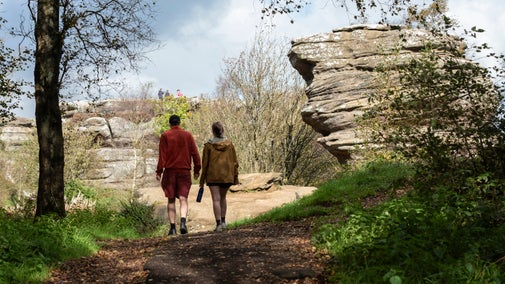The beginning of Brimham
Brimham’s rocks are largely made from millstone grit. The North America and Eurasia plates collided 400 million years ago, creating a huge mountain range to the north of the Brimham/Nidderdale area.
Around 335 million years ago, the UK was located over the equator where warm, tropical seas dominated. Approximately 15 million years later, erosion from the mountain range transported silt, sand and pebbles by fast flowing, powerful rivers, periodically flooding this tropical paradise.
The grit included crystals of steel-hard quartz and softer crystals of feldspar. The deposits by the rivers were compressed and hardened over time to form the millstone grit rocks of Brimham.
Bedding planes
As grit and sand is laid down, each depositional episode form layers called bedding planes. Bedding planes represent periods of time and depending on the angle at which they are laid down, show the direction the river was flowing.
A change in the angle of the bed is representative of a change in the river direction. In some places at Brimham the bedding planes run diagonally as well as horizontally, showing where huge underwater sand dunes once were.
Holes and tunnels
In places there are large holes and tunnels. Some of these were formed by stones getting caught in an indentation and being swirled round by water, wearing away circular holes.
Long, tunnel-like holes are likely to have been formed when giant vegetation (such as roots) were buried in the rock when it was being formed. It then would have eroded more quickly, leaving a tube-like hole.








